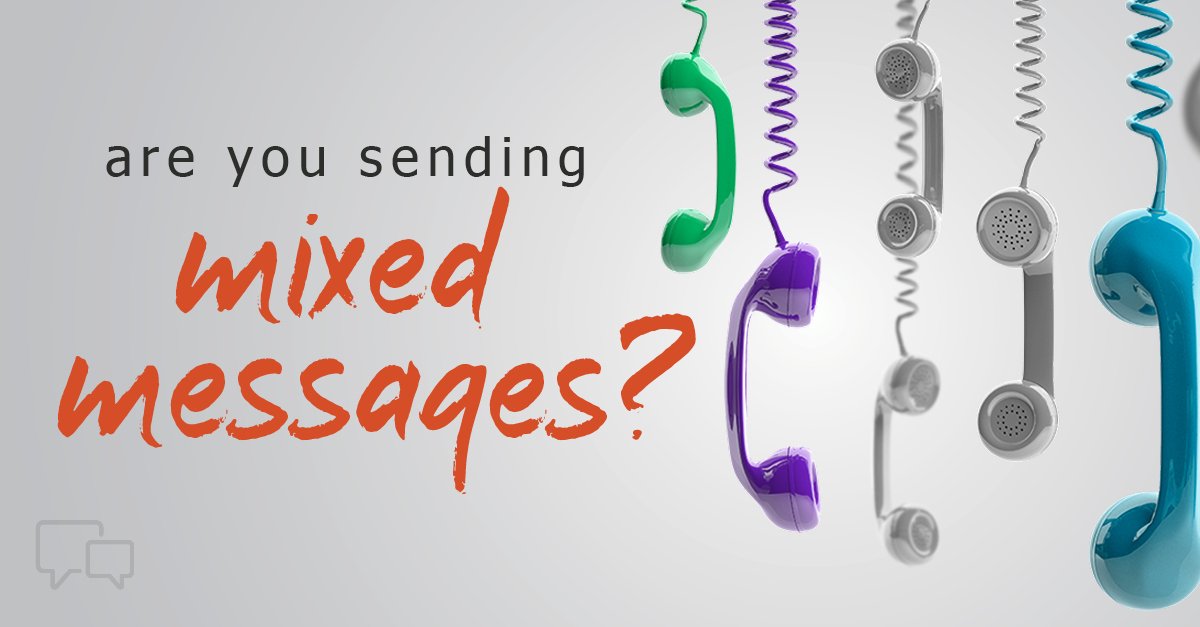
An effective marketing message should do more than make a good first impression. To influence buying decisions, your message needs to make a lasting impression.
The most effective marketing message connects to your buyer’s situation and their motivations within that situation.
So, how do you know what motivates your buyer?
Message to the Buyer’s Situation
When developing a marketing message, you might have a buyer persona in mind. But knowing someone’s role, age, and other demographics won’t motivate them to act. What motivates your buyer is the situation they’re in, and whether that situation is helping or hindering their business goals.
For example, a new prospect wants to know whether their current solution is sustainable and whether you can offer any previously unconsidered insight that will help them reach their goals. When they become a customer, they need to know that you’re continuing to help them achieve their strategic business goals.
Your buyer’s motivations change as they move from prospect to customer, which means you need to tailor your messages to match each situation.
Tailor Your Marketing Message for Acquisition vs. Expansion
Our research shows that your messages for customer acquisition conversations should be entirely different than your messages for customer expansion conversations. And it’s all because of a piece of science called Status Quo Bias.
Status Quo Bias is the idea that people are reluctant to do anything different than what they’re doing today. In fact, they will do everything possible to avoid change.
In your customer acquisition messages, you need to defeat Status Quo Bias by telling a compelling, disruptive story that makes their current situation seem unsafe and unsustainable. And you need to highlight your differentiation in your message to make your solution the clear choice versus the competition.
In customer expansion messages, you need to defend your position as your customer’s status quo. Using the same disruptive acquisition story with an existing customer increases the likelihood of switching by at least 10 percent. Instead, reinforce their natural Status Quo Bias by showing how changing now will be risky and expensive.
From this broad example, you can see how using a tailored message improves your chances of winning more deals. But creating a tailored message is just one part of the equation. You also need to communicate that message consistently.
Don’t Send Mixed Messages
In a recent industry survey, 53 percent of B2B marketers told us they don’t follow any formal methodology for developing messages. Interestingly, 77 percent said that having a consistent process is “important” or “very important,” even though more than half don’t have one.
That’s a problem, especially because messages are getting created all over your organization. Even though Marketing, Sales, and Customer Success are communicating with the same people, they are often telling different stories in different ways.
For example, your prospect might see your demand generation message, but if your sales reps aren’t communicating a consistent message, it causes confusion. And when buyers experience too much confusion and complexity, they’ll end up abandoning the sales process.
After your prospect becomes a customer, they’re probably still receiving messages from your marketing campaigns. Are those messages competing with the messages they receive from Customer Success? Here again, you might be confusing your customers by using a message that challenges their status quo, which is the last thing you want to do when you are their status quo.
To create and communicate more consistent messages that match your buyers’ motivations, you can build message frameworks to match each major decision in the Customer Deciding Journey.
Use Science-Backed Marketing Message Frameworks
There are two significant advantages to using message frameworks based on your buyers’ psychology.
First, developing consistent messages based on frameworks makes it much easier to create content in a systematic, repeatable way.
Second, when your messages are based on Decision Science, it doesn’t matter whether you’re a marketer, a salesperson, or a customer success manager—it’s all about responding to the buyer’s situation. As long as you’re using the message framework that fits their situation, you’re automatically speaking with a consistent voice across your organization.
The messages you send to your prospects and customers are influencing their decisions. If you hope to guide those decisions in your favor, develop your marketing message frameworks based on your buyers’ situations and motivations.
In this article series, you’ll discover new research and marketing skills to guide your buyers’ decisions in your direction.
Get our research report, Making Marketing Memorable, to get more science-backed strategies to make your marketing more influential.
Read the other articles in the series:





